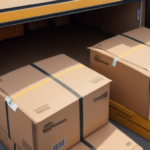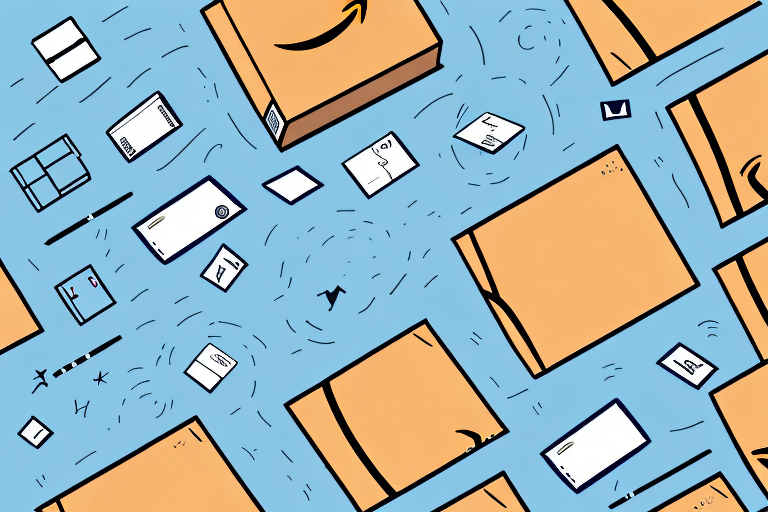Amazon’s Customer-Centric Return Policy
Online shopping has revolutionized the way we purchase goods, but what happens when those items fail to meet our expectations or are not what we anticipated? Amazon’s comprehensive return policy offers customers the flexibility to return unwanted items for a refund or exchange with ease. This customer-friendly approach not only enhances user experience but also builds trust and loyalty among shoppers.
Key Features of Amazon’s Return Policy
- 30-Day Return Window: Most items can be returned within 30 days of receipt, providing ample time for customers to evaluate their purchases.
- Extended Holiday Returns: During the holiday season, Amazon extends the return period, accommodating gift exchanges and seasonal purchases.
- Free Return Shipping: For eligible items, Amazon offers free return shipping, simplifying the return process for customers.
- Instant Refunds: Certain items qualify for instant refunds once scanned at a UPS drop-off location, ensuring quick access to funds.
Benefits for Customers
The flexibility of returning items without hassle encourages customers to make confident purchase decisions. Features like instant refunds and free return shipping further enhance the convenience, making Amazon a preferred choice for online shoppers.
Environmental Implications of Amazon Returns
The ease of returning items to Amazon brings significant environmental concerns. According to a report by Optoro, nearly 5 billion pounds of returned goods end up in landfills each year, contributing to the growing problem of electronic and consumer waste.
Amazon’s Sustainability Initiatives
- Partnerships with Nonprofits: Amazon collaborates with organizations like Goodwill to donate and resell returned items, reducing waste and supporting local communities.
- Frustration-Free Packaging: This program encourages manufacturers to use recyclable and easy-to-open packaging, minimizing waste and decreasing return rates due to damaged packaging.
- Amazon Day: By allowing customers to choose a specific day for deliveries, Amazon reduces the number of separate shipments, thereby lowering the carbon footprint associated with transportation.
Impact on Waste Reduction
These initiatives are part of Amazon’s broader strategy to mitigate the environmental impact of returns. By promoting sustainable practices and reducing waste, Amazon aims to balance customer convenience with environmental responsibility.
Comprehensive Overview of Amazon’s Return Process
Amazon manages a wide range of returned items, each with specific handling procedures to ensure efficiency and sustainability.
Types of Returns Handled by Amazon
- Electronics and Appliances: These items are inspected for functionality and resold as refurbished or returned to manufacturers for repair.
- Clothing and Apparel: Items in new, unopened condition are resold, while opened items may be sold at a discount or donated.
- Perishable Goods: Returned perishable items are carefully managed to prevent spoilage and are either recycled or disposed of safely.
- Hazardous Materials: Items like batteries and chemicals undergo special handling to ensure safe disposal in compliance with regulations.
Step-by-Step Return Process
- Initiate Return: Log into your Amazon account, navigate to "Your Orders," and select the item you wish to return.
- Print Shipping Label: Amazon provides a pre-paid shipping label for eligible items.
- Package the Item: Securely package the item, attach the shipping label, and drop it off at a designated location.
- Refund Processing: Once Amazon receives and inspects the item, the refund is processed within a few days.
Handling of Non-Eligible Returns
Some items, such as digital downloads or personalized products, may not be eligible for return. Additionally, items returned outside the specified window or in altered condition may be rejected.
Managing Returns with Third-Party Sellers
Amazon’s marketplace includes a vast network of third-party sellers, each with its own return policies, creating a diverse return ecosystem.
Third-Party Seller Return Policies
While Amazon provides overarching guidelines, third-party sellers may have specific return policies regarding time frames, condition of items, and restocking fees. It is crucial for customers to review these policies before making a purchase.
Amazon’s Support for Third-Party Returns
Amazon offers customer service support for returns involving third-party sellers, mediating disputes and ensuring compliance with Amazon’s return standards. Sellers with high return rates or negative feedback may face restrictions or removal from the platform.
Ensuring Reliable Seller Practices
- Buy Box Feature: Highlights top-performing sellers with favorable return policies, helping customers choose reliable sellers.
- Seller Performance Metrics: Amazon tracks return rates and customer feedback to maintain high standards among sellers.
Future Trends and Innovations in Amazon’s Return Process
Amazon continues to innovate its return processes to enhance efficiency, reduce environmental impact, and improve customer satisfaction.
Technological Advancements
- Artificial Intelligence: AI and machine learning are being utilized to predict return patterns, optimize logistics, and reduce unnecessary returns.
- Virtual Fitting Rooms: Tools that allow customers to visualize clothing on themselves virtually help decrease returns due to sizing issues.
Expansion of Return Drop-Off Locations
Amazon is testing features that allow customers to return items at select retail locations such as Kohl’s stores, streamlining the return process and minimizing shipping-related environmental impacts.
Sustainability Goals
With increasing focus on sustainability, Amazon is exploring more eco-friendly return solutions, including enhanced recycling programs and partnerships aimed at reducing waste.
Optimizing Your Amazon Return Experience
Efficiently managing returns can enhance your shopping experience and ensure timely refunds. Here are some tips to navigate the return process smoothly.
Best Practices for Returning Items
- Understand Return Policies: Always review the return policies specific to the item and seller before making a purchase.
- Maintain Item Condition: Keep items in their original condition and packaging to ensure eligibility for a full refund.
- Track Your Returns: Use tracking numbers provided by Amazon to monitor the status of your returns and refunds.
Avoiding Common Return Mistakes
To prevent rejected returns, ensure that items are returned within the allowed timeframe and in their original condition. Carefully follow Amazon’s return instructions and reach out to customer service if you encounter any issues.
The Impact of COVID-19 on Amazon’s Return Process
The COVID-19 pandemic significantly impacted Amazon’s return operations, prompting the company to adapt its policies and procedures to ensure the safety of both customers and fulfillment center workers.
Policy Adjustments
Amazon extended its return periods for certain items and enhanced verbal and digital communication methods to minimize physical contact during the return process.
Operational Changes
Increased automation and safety measures were implemented in fulfillment centers to handle returns efficiently while adhering to health guidelines. These changes resulted in longer processing times initially, but improvements have been made to expedite refunds.
In conclusion, Amazon’s return process is a multifaceted system designed to balance customer satisfaction with operational efficiency and environmental responsibility. By understanding and leveraging Amazon’s return policies, customers can make informed purchasing decisions and contribute to sustainable consumption practices.






















